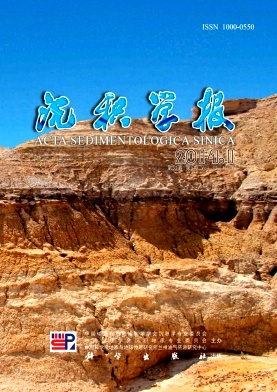Relationship between Gypsum-salt Rock and Oil-gas in Dongpu Depression of Bohai Gulf Basin
- Publish Date: 2014-02-10
-
Key words:
- gypsum-salt rock /
- organic matter /
- oil and gas generation /
- oil and gas migration and accumulation /
- oil and gas distribution /
- Dongpu depression
Abstract: Dongpu depression is located in southeastern Bohai Bay Basin, five sets of gypsum-salt rock developed, and the maximum cumulative thickness can be up to 950 m. The lithologic variation of gypsum-salt layer can be divided into three zones including gypsum-salt zone, gypsum-salt and sand-mudstone transition zone, sand-mudstone zone. Exploration practice confirmed that gypsum-salt rock on hydrocarbon enrichment in vertical or in horizontal has an important controlling role, performing for nearly 93.7 % of oil and nearly 80% of gas in Dongpu depression distribution in the north part, and most oil and gas distributes among gypsum-salt layers. Controls of gypsum-salt rock on pool forming elements were systematically analyzed, and the results show that the source rock in gypsum-salt and sand-mudstone transition zone has the highest organic matter abundance because of its advantage for high quality source rock accumulation and preservation, the next is that in gypsum-salt zone, and that in sand-mudstone zone have relative lower organic matter abundance. Meanwhile, the farther source rock away from gypsum-salt rock, the lower organic matter abundance it has, and when the distance between source rock and gypsum-salt rock exceeds 30 or 40 meters, the influence on organic matter abundance by gypsum-salt rock decreases significantly. For high water salinity, many halophilic bacteria and algae adapted to high salt environments thrive and become a major source of sedimentary organic matter, which is conducive to the formation of sapropelic organic matter. For the gypsum-salt rock has high thermal conductivity and low heat generation rate, it can transmit ground temperature easily from deep stratum to shallow stratum, which could result in source rock in the upper part of gypsum-salt stratum has lower temperature gradient and abnormal high temperature than that of no gypsum-salt stratum, to the contrary, source rock in the lower part of gypsum-salt stratum has higher temperature gradient and abnormal low temperature than that of no gypsum-salt stratum. The anomal temperatures in the upper and lower part of gypsum-salt stratum result in reducing the generation threshold depth and increasing the postmaturity threshold depth of source rocks, this can effectively expand the scope of hydrocarbon generation window. The relationship between reservoir porosity and its depth shows that the porosity of reservoir covered by gypsum-salt rock has 2~10 percent larger than that of normal sediment stratums, it firstly increases and then decreases with increasing depth, and the maximum porosity appears within a certain distance from gypsum-salt rock. Statistical results on the distribution of gypsum-salt rock and the height of hydrocarbon bearing strata show that most reservoirs in gypsum-salt area distribute below 0~50 meters thickness of gypsum-salt strata, only 50 meters thickness gypsum-salt strata could seal 500 meters height of hydrocarbon, and gypsum-salt layers plugging maximum oil height is to be significantly greater than that of gas. Gypsum-salt rock has strong plasticity, which is apt to form kinds of traps under sypsum-salt, inter sypsum-salt, upper sypsum-salt and at the edge of gypsum-salt. Under the similar structural conditions, the abnormal formation presssure under the thicker gypsum-salt rock is significantly greater than that at the edge of gypsum-salt rock, so the oil and gas is easier to be filled and preserved in the traps at the edge of gypsum-salt rock. Even there has oil and gas migrating towards gypsum-salt rocks, mostly will be affected by abnormal pressure at the edge of gypsum-salt rock and accumulated. The strong vertical packer role of gypsum-salt rock on oil and gas is conducive to its lateral migration in the sandbody below gypsum-salt layer. Synthetical analysis lead to that hydrocarbon in northern Dongpu depression shows ring or semi-ring shaped distribution around the thickness center of gypsum-salt layer. At the edge area of gypsum-salt rock not only has good source rock and good trap conditions, but also has proper hydrocarbon charging pathway and dynamics, so it becomes the most favourable area for oil and gas accumulation.
| Citation: | Relationship between Gypsum-salt Rock and Oil-gas in Dongpu Depression of Bohai Gulf Basin[J]. Acta Sedimentologica Sinica, 2014, 32(1): 126-137. |






 DownLoad:
DownLoad: